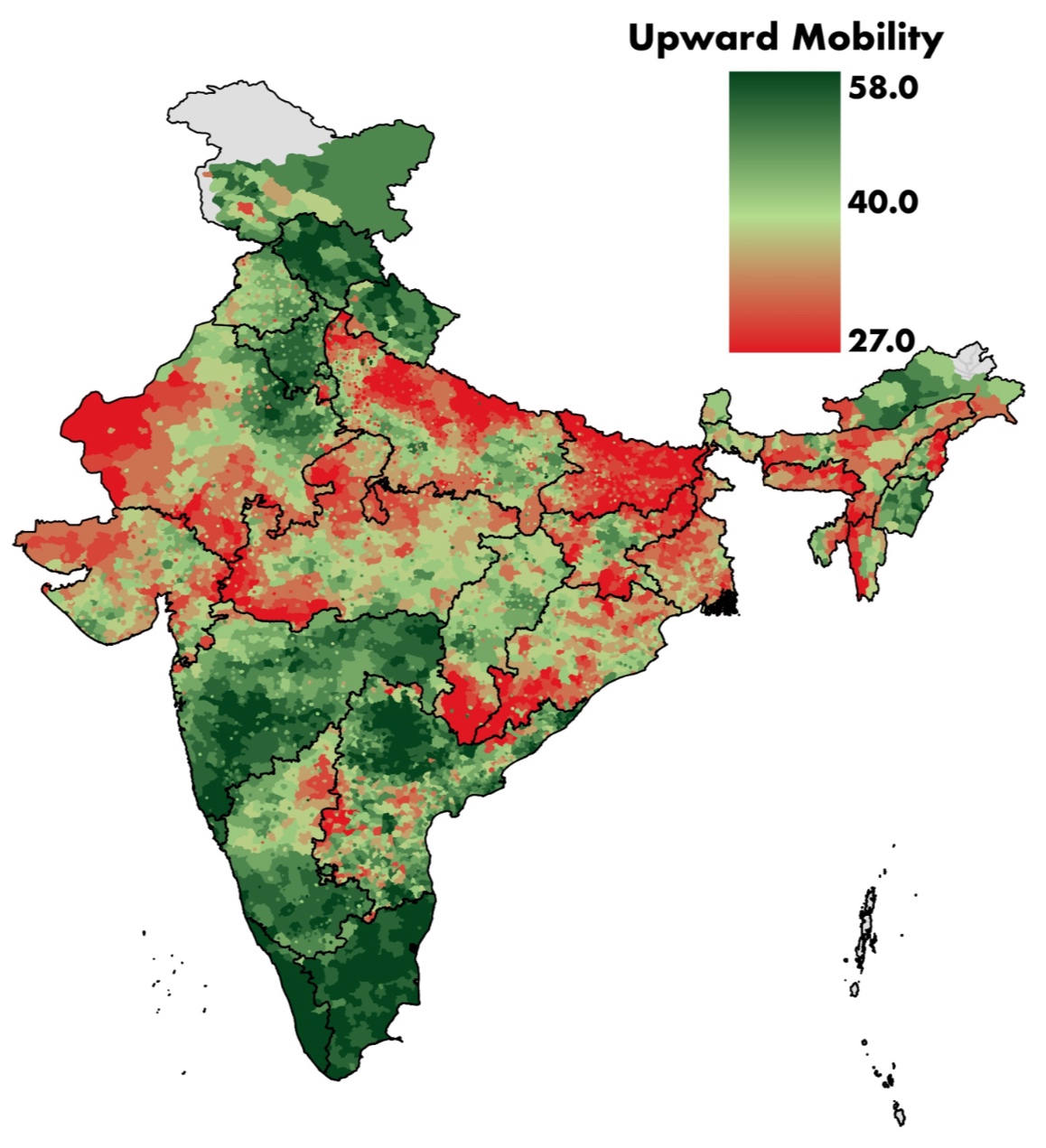
This map presents the geographical distribution of upward mobility across subdistricts of India. The measure of upward mobility describes the expected national education rank of a son born to a father in the bottom half of the parent education distribution. All ranks are relative to the national education distribution. (At this time, there is no data available to run this analysis with income ranks, so we use education, which is a close proxy for income and consumption.) A value of 25 means that a child born into the bottom half of the parent rank distribution will make no relative upward progress in his lifetime---their parents were on average at the 25th percentile of the rank distribution, and they can expect the same outcome for themselves. A value of 50 implies total equality of opportunity: children's outcomes are not dependent on the social rank of their parents.
For comparison, using similar data, we estimate upward mobility to be about 47 in Denmark, and 40 in the United States.
This map is based on research described in the paper Intergenerational Mobility in India: Estimates from New Methods and Administrative Data, by Sam Asher, Paul Novosad, and Charlie Rafkin. The paper describes how the measure is calculated, and presents additional results on the distribution of upward mobility in India across space and over time.